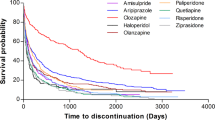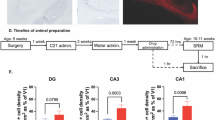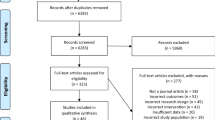Abstract
Haloperidol (HAL), a potent typical antipsychotic, continues to be a frequently prescribed medication for behavioral disturbances associated particularly with schizophrenia despite well-documented adverse effects associated with its chronic use. Animal experiments have even indicated that HAL can damage cholinergic pathways and thus could be especially deleterious to those experiencing cognitive deficits. However, several recent clinical studies indicate that atypical antipsychotics may actually improve cognitive function in some patients, although this assertion requires further investigation. The purpose of this study was to compare the effects of prior chronic (45- or 90-day) oral exposure to HAL and the atypical antipsychotics risperidone (RISP) and clozapine (CLOZ) on cognitive performance and central cholinergic markers in rats. All analyses were done after 4 days of drug washout in order to minimize direct drug effects. Learning performance and choline acetyltransferase (ChAT) levels were assessed in a water maze task and with immunofluorescence staining, respectively. HAL significantly impaired learning performance after 90 but not after 45 days of treatment when compared to both vehicle controls and the atypical agents, while RISP slightly improved task performance. Both 45 and 90 days of previous HAL exposure reduced ChAT staining in several brain regions, including the cortex, caudate-putamen, and hippocampus. ChAT staining in the caudate-putamen and hippocampus was also decreased after 90 days of RISP exposure, raising the possibility of deleterious cognitive effects after exposure to this dosage for longer periods of time. The results suggest that antipsychotic drugs exert differential and temporally dependent effects on central cholinergic neurons and learning performance.
Similar content being viewed by others
Log in or create a free account to read this content
Gain free access to this article, as well as selected content from this journal and more on nature.com
or
References
Angelucci F, Aloe L, Gruber HM, Fiore M, Mathe AA (2000). Chronic antipsychotic treatment selectively alters nerve growth factor and neuropeptide Y immunoreactivity and the distribution of choline acetyltransferase in rat brain regions. Int J Neuropsychopharmacol 3: 13–25.
Barrientos A, Marin C, Miro O, Casademont J, Gomez M, Nunes V et al (1998). Biochemical and molecular effects of chronic HAL administration on brain and muscle mitochondria of rats. J Neurosci Res 53: 475–481.
Bartus RT (2000). On neurodegenerative diseases, models, and treatment strategies: lessons learned and lessons forgotten a generation following the cholinergic hypothesis. Exp Neurol 163: 495–529.
Borges LF, Iversen SD (1986). Topography of choline acetyltransferase immunoreactive neurons and fibers in the rat spinal cord. Brain Res 362: 140–148.
Bymaster FP, Hemrick-Luecke SK, Perry KW, Fuller RW (1996). Neurochemical evidence for antagonism by olanzapine of dopamine, serotonin, α 1-adrenergic and muscarinic receptors in vivo in rats. Psychopharmacology 124: 87–94.
Cadet JL, Lohr JB (1987). Free radicals and the developmental pathology of schizophrenic burnout. Integrative Psychiatry 5: 40–48.
Connaughton M, Priestley JV, Sofroniew MV, Eckenstein F, Cuello AC (1986). Inputs to motoneurons in the hypoglossal nucleus of the rat: light and electron microscopic immunocytochemistry for choline acetyltransferase, substance P and enkephalins using monoclonal antibodies. Neuroscience 17: 205–224.
Cuesta MJ, Peralta V, Zarzuela A (2001). Effects of olanzapine and other antipsychotics on cognitive functions in chronic schizophrenia: a longitudinal study. Schizophr Res 48: 17–28.
Didriksen M (1995). Effects of antipsychotics on cognitive behavior in rats using the delayed non-match to position paradigm. Eur J Pharmacol 28: 241–250.
Eckenstein F, Thoenen H (1982). Production of specific antisera and monoclonal antibodies to choline acetyltransferase: characterization and use for identification of cholinergic neurons. EMBO J 1: 363–368.
Friedman JI, Harvey PD, Kemether E, Byne W, Davis KL (1999). Cognitive and functional changes with aging in schizophrenia. Biol Psychiatry 46: 921–928.
Horrobin DF (1999). The effects of antipsychotic drugs on membrane phospholipids—a possible novel mechanism of action of clozapine. In: Peet M, Glen I, Horrobin D (eds). Phospholipid Spectrum Disorders in Psychiatry. Marius Press: Lancashire, UK. pp 113–117.
Houser CR, Crawford GD, Barber RP, Salvaterra PM, Vaughn JE (1983). Organization and morphological characteristics of cholinergic neurons: an immunocytochemical study with a monoclonal antibody to choline acetyltransferase. Brain Res 266: 97–119.
Kapur S, Zipursky RB, Remington G (1999). Clinical and theoretical implications of 5-HT and D2 receptor occupancy of clozapine, risperidone and olanzapine in schizophrenia. Am J Psychiatry 156: 286–293.
Karson CN, Casanova MF, Kleinman JE, Griffin WS (1993). Choline acetyltransferase in schizophrenia. Am J Psychiatry 150: 454–459.
Karson CN, Mrak RE, Husain MM, Griffin WS (1996). Decreased mesopontine choline acetyltransferase levels in schizophrenia. Correlations with cognitive functions. Mol Chem Neuropathol 29: 181–191.
Kern RS, Green MF, Marshall Jr BD, Wirshing WC, Wirshing D, McGurk SR et al (1999). Risperidone versus HAL on secondary memory: can newer medications aid learning? Schizophr Bull 25: 223–232.
Khan MM, Evans DR Gunna V, Scheffer RE, Parikh VV, Mahadik SP (2002). Reduced erythrocyte membrane essential fatty acids and increased lipid peroxides in schizophrenia at the never-medicated first-episode of psychosis and after years of treatment with antipsychotics. Schizophr Res 58: 1–10.
Kinon BJ, Lieberman JA (1996). Mechanisms of action of atypical antipsychotic drugs: a critical analysis. Psychopharmacology (Berl) 124: 2–34.
Korenovsky A, Laev H, Mukherjee S, Mahadik SP (1990). Quantitative analyses of plasma cholinesterase isozymes in HAL-treated rats. Biol Psychiatry 27: 871–883.
Lussier I, Stip S (2001). Memory and attention deficits in drug naïve patients with schizophrenia. Schizophr Res 48: 45–55.
Mahadik SP, Laev H, Korenovsky A, Karpiak SE (1988). HAL alters rat CNS cholinergic system: enzymatic and morphological analyses. Biol Psychiatry 24: 199–217.
Mahadik SP, Mukherjee S (1996). Free radical pathology and antioxidant defense in schizophrenia: a review. Schizophr Res 19: 1–18.
Mahadik SP, Sitasawad V, Mulchandani M (1999). Membrane peroxidation and the neuropathology of schizophrenia. In Peet M, Glen I, Horrobin D (eds). Phospholipid Spectrum Disorders in Psychiatry. Marius Press: Lancashire, UK. pp 99–111.
McDonald RJ, White NM (1995). Hippocampal and nonhippocampal contributions to place learning in rats. Behav Neurosci 109: 579–593.
McNamara RK, Skelton RW (1993). The neuropharmacological and neurochemical basis of place learning in the Morris water maze. Brain Res Rev 18: 33–49.
Miller R, Chouinard G (1993). Loss of striatal cholinergic neurons as a basis for tardive and L-dopa-induced dyskinesias, neuroleptic-induced supersensitivity psychosis and refractory schizophrenia. Biol Psychiatry 34: 713–738.
Moore NA, Calligaro DO, Wong DT, Bymaster F, Tye NC (1993). The pharmacology of olanzapine and other new antipsychotic agents. Curr Opin Invest 2: 299.
Morris RGM (1984). Development of a water-maze procedure for studying spatial learning in the rat. J Neurosci Methods 11: 47–60.
Parikh V, Khan MM, White JR, Buckley PF, Mahadik SP (2002). Atypical antipsychotics such as risperidone and clozapine do not induce the oxidative stress and the lipid peroxidation similar to HAL in rats. Biol Psychiatry 51: 184S.
Paxinos G, Watson CR (1998). The Rat Atlas in Stereotaxic Coordinates, 4th edn. Academic Press: San Diego, CA.
Pedata F, Sorbi S, Pepeu G (1980). Choline high-affinity uptake and metabolism and choline acetyltransferase activity in the striatum of rats chronically treated with neuroleptics. J Neurochem 35: 606–611.
Peet M, Glen I, Horrobin D (1999). Phospholipid Spectrum Disorders in Psychiatry. Marius Press: Lancashire, UK.
Prince JA, Yassin MS, Oreland L (1997). Neuroleptic-induced mitochondrial enzyme alterations in the rat brain. J Pharmacol Exp Ther 280: 261–267.
Reddy R, Yao J (1996). Free radical pathology in schizophrenia: a review. Prostaglandins Leukot Essent Fatty Acids 55: 33–43.
Risse SC, Barnes RJ (1986). Pharmacologic treatment of agitation associated with dementia. J Am Geriatric Soc 34: 368–376.
Schneider LS, Pollock VE, Lyness SA (1990). A meta-analysis of controlled trials of neuroleptic treatment in dementia. J Am Geriatric Soc 38: 553–563.
Sharma T, Mockler D (1998). The cognitive efficacy of atypical antipsychotics in schizophrenia. J Clin Psychopharmacol 18 (2 Suppl 1): 12S–19S Related Articles, Books, Link Out.
Skarsfeldt T (1996). Differential effect of antipsychotics on place navigation of rats in the Morris water maze. A comparative study between novel and reference antipsychotics. Psychopharmacology (Berl) 124: 126–133.
Subramanyam B, Pond SM, Eyles DW, Whiteford HA, Fouda HG, Castagnoli Jr N (1991). Identification of potentially neurotoxic pyridinium metabolite in the urine of schizophrenic patients treated with HAL. Biochem Biophys Res Commun 181: 573–578.
Terry Jr AV (2000). Spatial navigation (water maze) tasks. In Buccafusco JJ (ed). Behavioral Methods in Neuroscience. CRC Press: Boca Raton, FL. pp 153–166.
Tollefson GD (1996). Cognitive function in schizophrenic patients. J Clin Psychiatry 57 (Suppl 11): 31–39.
Tsai G, Goff DC, Chang RW, Flood J, Baer L, Coyle JT (1998). Markers of glutaminergic neurotransmission and oxidative stress associated with Tardive dyskinesia. Am J Psychiatry 155: 1207–1213.
Wadenberg M-LG, Soliman A, Vanden-Spek SC, Kapur S (2001). Dopamine D2 receptor occupancy is a common mechanism underlying animal models of antipsychotics and their clinical effects. Neuropsychopharmacology 25: 633–641.
Winkler J, Ramirez GA, Thal LJ, Waite JJ (2000). Nerve growth factor (NGF) augments cortical and hippocampal cholinergic functioning after p75NGF receptor-mediated deafferentiation but impairs inhibitory avoidance and induces fear-related behaviors. J Neurosci 20: 834–844.
Acknowledgements
The authors would like to thank Joe Carothers, Kavya Sebastian, and Deepti Jain for their excellent technical assistance, and Dr Jeffrey Rausch for a critical review of the manuscript. This study was partially supported by Janssen Pharmaceutica Research Foundation, USA.
Author information
Authors and Affiliations
Corresponding author
Rights and permissions
About this article
Cite this article
Terry, A., Hill, W., Parikh, V. et al. Differential Effects of Haloperidol, Risperidone, and Clozapine Exposure on Cholinergic Markers and Spatial Learning Performance in Rats. Neuropsychopharmacol 28, 300–309 (2003). https://doi.org/10.1038/sj.npp.1300039
Received:
Revised:
Accepted:
Published:
Issue date:
DOI: https://doi.org/10.1038/sj.npp.1300039
Keywords
This article is cited by
-
Clozapine induces astrocyte-dependent FDG-PET hypometabolism
European Journal of Nuclear Medicine and Molecular Imaging (2022)
-
Clozapine Improves Memory Impairment and Reduces Aβ Level in the Tg-APPswe/PS1dE9 Mouse Model of Alzheimer’s Disease
Molecular Neurobiology (2017)
-
SELENBP1 expression in the prefrontal cortex of subjects with schizophrenia
Translational Psychiatry (2015)
-
Asenapine effects in animal models of psychosis and cognitive function
Psychopharmacology (2009)
-
Erythropoietin Prevents Haloperidol Treatment-Induced Neuronal Apoptosis through Regulation of BDNF
Neuropsychopharmacology (2008)



